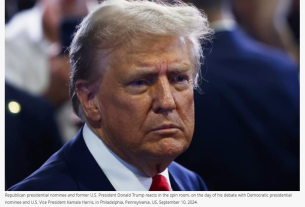Washington, D.C., 4 August 2025 — As the U.S. administration intensifies its tariff strategy, economists and industry leaders warn of mounting risks to consumer welfare, business competitiveness, and long-term economic resilience. While tariffs may offer short-term revenue gains and political leverage, they risk entrenching inefficiencies, distorting market dynamics, and undermining America’s global leadership in innovation.
📉 Tariffs: Short-Term Gains, Long-Term Costs
- Consumer Impact: Deloitte estimates that tariffs could raise the average price of automobiles by 13.5%, or $6,400, compared to 2024 levels. Toy prices are also rising, with 80% of U.S. toy imports coming from China now subject to elevated duties.
- Inflation Pressure: J.P. Morgan projects that recent tariff hikes could add 0.2 to 0.4 percentage points to the PCE price index, with broader measures potentially increasing core inflation by 1.4 to 2.2 percentage points.
- Business Uncertainty: Small businesses report declining sales and reduced market presence due to unpredictable tariff policies and rising input costs.
- Ratchet Effect: Once industries become reliant on tariff protection, reversing course becomes politically difficult. Firms may lose global competitiveness and lobby against tariff rollbacks.
- Revenue Addiction: Tariff income may tempt policymakers to fund large-scale spending without sustainable revenue sources, creating fiscal imbalances.
🧠 A Smarter Path Forward: Innovation-Led Growth
Rather than relying on protectionism, the U.S. can harness its strengths in high-growth sectors that offer sustainable revenue, global influence, and domestic job creation. Three standout areas include:
1. Artificial Intelligence (AI)
- The U.S. AI market was valued at $146 billion in 2024 and is projected to reach $851 billion by 2034, growing at a CAGR of 19.3%.
- The banking and financial services sector (BFSI) alone accounted for nearly 20% of AI adoption in 2024.
- AI is transforming healthcare, transportation, and manufacturing, with applications ranging from autonomous vehicles to predictive diagnostics and smart logistics.
2. Green Technology & Clean Energy
- The North American green tech market is growing at a CAGR of 22.4%, with the U.S. holding a 40.2% share of global revenue.
- The industry supports over 3,100 companies and a workforce of 244,500, with 14,500 new jobs added in the past year.
- U.S. exports of environmental technologies reached $75 billion, with top markets including Canada, Mexico, Germany, and France.
- Investment in EVs, battery storage, and renewable infrastructure is accelerating under the Inflation Reduction Act and CHIPS Act.
3. Entrepreneurship & Startups
- The U.S. saw 5.2 million “likely employer” business applications between 2021 and 2023—a 33% increase over pre-pandemic levels.
- Startup growth surged in 40 states, with Alabama, West Virginia, and Connecticut leading at 65%, 62%, and 61%, respectively.
- The Global Entrepreneurship Monitor reports that 19% of U.S. adults are actively engaged in starting or running a new business—matching historic highs.
- Entrepreneurship drives job creation, innovation, and wage growth, especially in underserved communities and minority-owned enterprises.
⚖️ Conclusion: Choose Innovation, Not Isolation
Tariffs may offer short-term political wins, but they come at a steep economic cost. By investing in sectors where the U.S. leads—AI, green tech, and entrepreneurship—the administration can foster sustainable growth, global competitiveness, and economic resilience. The choice is clear: protect yesterday’s industries or empower tomorrow’s innovators.


